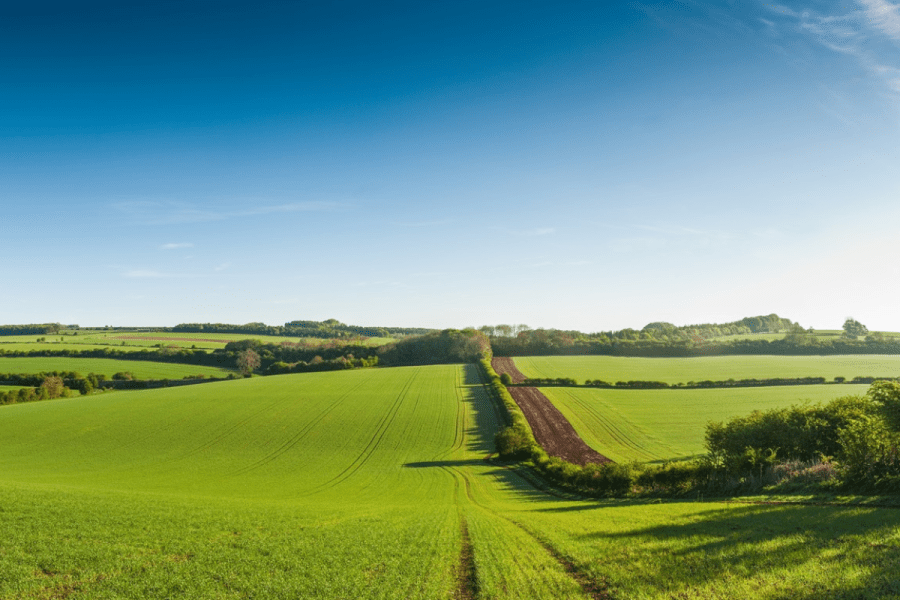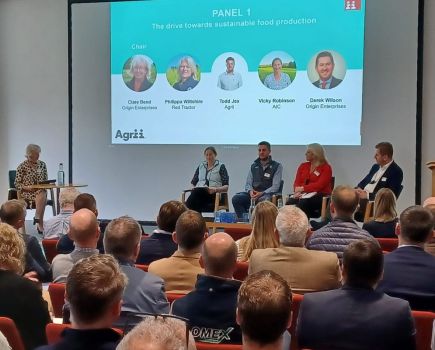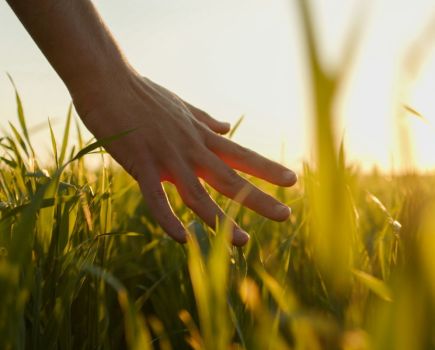Taking a flexible and adaptable approach to farming has helped Ed Walton to successfully manage multiple challenges, proving the area of land doesn’t always matter, but the way it’s farmed does. CPM speaks to him to learn more.
“The spreader and GPS paid for itself in two years which demonstrated just how much variation there was in the fields.”
By Melanie Jenkins
Adapting to the constantly changing farming landscape can pose a challenge but one farmer has become more sustainable while remaining flexible in his approach, attributing elements such as variable rate adoption and careful variety selection to his continued successful operations.
Farming as J. W. Walton and Son, at Underhill Farm in Winderton, near Banbury on the edge of the Cotswolds, in both an Area of Outstanding Natural Beauty and a conservation area, Ed Walton operates the predominantly arable enterprise and Agrii iFarm alongside his father.
The family has been working the land since 1917 when Ed’s great grandfather took on the tenancy. “The vast majority of the land is on the Marquiss of Northampton’s estate, consisting of around 190ha as well as contract work on several neighbouring farms,” explains Ed. “We’re largely working on Grade 3 medium soils, but it can vary from sand right through to heavy clay. Cropping consists of wheat, spring barley, oilseed rape and peas, with the OSR and peas grown as break crops.”
One of the major adoptions for the farm has been a variable rate approach. The journey started in 2014, the same year that Ed was involved with Agrii’s iFarms project, when he began implementing variable potassium (P) and phosphate (K) to his system. “Introducing this was as much to do with cost saving as it’s about doing the right thing, but overall the aim is to be more efficient.”
Since then he’s introduced variable rate seeding and nitrogen to his system. He says implementing the former has meant investing in a newer drill and luckily he was able to buy a 4m Väderstad Rapid from a neighbour three years ago.
“We’re on quite steep, hilly land and with the range of soil types it means it can be hard to grow even crops. I don’t think applying variable rate seeding has helped me save on seed, but has instead meant we’ve drilled more seed where it’s required and less where not as much is warranted.”
When he first started applying P and K variably, he didn’t have GPS on the farm so he purchased a new spreader with GPS incorporated. “Impressively, the spreader and GPS paid for itself in two years which demonstrated just how much variation there was in the fields. I’ve since bought a tractor with GPS and linked it all together with the variable rate seeding.”
Soil testing has been integral to variable rate applications on the farm, explains Ed’s agronomist, Sarah Hookway of Agrii. “We soil test on the farm every five years and have created maps to work from. In addition, we’ve utilised green crop satellite imagery from Rhiza as well as using Ed’s visual assessment of bad patches to work from.”
During autumn 2022 Sarah and Ed worked with Agrii to introduce nitrogen scanning using DroneAg’s Skippy Scout in his OSR crops. “We had the crop scanned that autumn and this was then followed up by another scan in the spring which allowed us to calculate variable rate nitrogen applications,” she explains.
“The process was the first time for Ed but it has proved so valuable that we’ll look to use it on farm again. It showed up a lot of irregularity in the field and as a result Ed applied a variable rate application of nitrogen in the spring which helped to even the crop out.”
The latest addition to the farm comes in the form of a Massey Ferguson Ideal 7 combine which is due to be rolled out of the shed for the first time in the coming harvest. “This is a significant investment for us, but we bought our last combine in 2013 so it was due upgrading. Since buying the combine a neighbour has asked me to take on the harvesting on his farm, so it’s generating more work before we’ve even used it,” Ed explains.
One aspect of the combine that Ed is looking forward to using is its ability to create yield maps. He hopes that this will allow him to determine not only the effectiveness of his variable rate applications, but will also mean he can better plan for future cropping.
Like many other farmers, one of Ed’s biggest challenges has been OSR, says Sarah. “The farm has been fairly successful with the crop, due in part to planting in September after the higher flea beetle pressure in late August, but during the wet autumn of 2019 it completely failed. Conditions were so unfavourable that we weren’t able to get the iFarm trial plots planted that year either, so instead of changing Ed’s rotation, we planted cover crop mixes and turned the these into trials and used them as a means to improve soils.”
Ed feels the best way to deal with unpredictable weather conditions is to have large enough kit on farm that can operate quickly in small weather windows. “There’s always a window you can get out in but you have to be prepared to get the work done when it comes along which can mean having bigger machinery to get the job done. Our investment in the larger combine is partially justified because I know I’ll be able to go out and get crops harvested in good time when the conditions are right.”
A further tactic to keep operations running smoothly on farm involves kit maintenance during the winter months. “I hate breakdowns – they’re an unknown cost and are time killers. I prefer to spend time over the winter ensuring kit is well maintained so that during the rest of the year we’re minimising break-down and maintenance time.”
This coming autumn, Ed plans to conduct his first organic matter and carbon audit on the farm. “I want to benchmark where we are now so we know where to aim next. But at the end of the day, any environmental changes we make will have to stack up financially.”
With this in mind, he intends to explore the Sustainable Farming Incentive (SFI) options later this year to see how they could work with the business. “I’ve been involved with previous schemes and where we’re situated there’s a lot work with in terms of trees and hedges. The farm is 600-900ft above sea level so it’s really hilly with a lot of diversity around us, so there’s likely to be options we can implement.”
Over the coming years, Ed hopes to continue to grow the business but is open-minded about how this will unfold. “We never stand still but the direction of travel can change. It could be that we’re more involved with environmental schemes in the future but all it takes is for the world to have one bad harvest and we’re all back to growing wheat, so I feel we have to be flexible in our approach to farming and to where government policy will take us.”
He believes that sustainability means something different to each farmer but feels that it’s unanimously about balance. “Pre-Covid and the war in Ukraine, the Government’s aim was to heavily promote environmental management, but now the thought process has evolved back towards food production. I feel that we can get a balance between both the environment and food production that means neither ends up in a vulnerable situation.”
This article was taken from the latest issue of CPM. Read the article in full here.
For more articles like this, subscribe here.
Sign up for Crop Production Magazine’s FREE e-newsletter here.




